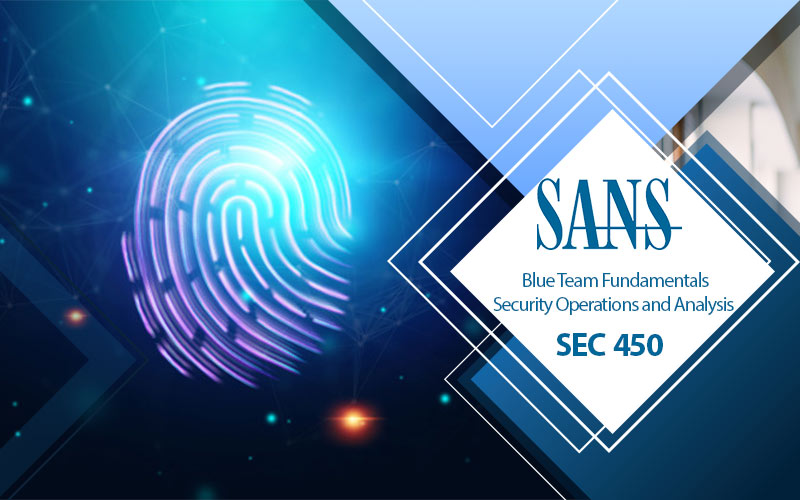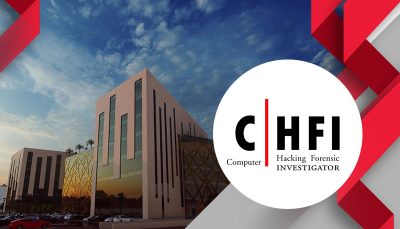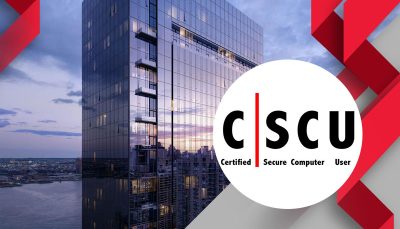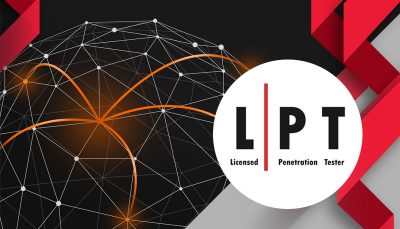
دوره SEC450: Blue Team Fundamentals: Security Operations and Analysis
آیا سازمان شما به دنبال راهی سریع و مؤثر برای تربیت تحلیلگران ، مهندسین و معماران بروز امنیتی است؟ آیا مدیران مرکز عملیات امنیتی (SOC) شما به دیدگاه فنی بهتر در مورد چگونگی بهبود کیفیت تحلیل، کاهش هزینه مالی و اجرای SOC کارآمد نیاز دارند؟
دوره SANS SEC 450 آموزش سریع برای اعضای جدید تیم دفاع سایبری و مدیران SOC است. این دوره دانش پذیران را با ابزارهای رایج در محیط کار یک مدافع آشنا می کند و توضیحات اساسی در مورد ابزارها، فرآیندها و جریان دادهها را که هر یک از اعضای تیم آبی نیاز به دانستن آنها دارد، ارائه میدهد.
دانشپذیران مراحل عملیات امنیتی را یاد میگیرند: نحوه جمع آوری دادهها، جایی که جمع میشوند و چگونه تهدیدات در آن دادهها شناسایی میشوند. این کلاس عمیقا درگیر تاکتیکهایی برای خلع سلاح و بررسی وقایعی است که به عنوان مخرب شناخته میشوند و همچنین چگونگی جلوگیری از اشتباهات رایج و انجام مداوم آنالیز با کیفیت بالا. دانش آموزان کار داخلی محبوبترین پروتکلها و چگونگی شناسایی پروندههای مسلح شده و همچنین حمله به هاست و دادههای موجود در شبکه خود را یاد میگیرند.
این دوره از آموزشهای عملی و کاربردی با استفاده از یک محیط شبیهسازی شده SOC با یک ابزار واقعی کاملا یکپارچه استفاده میکند که شامل موارد زیر است:
اطلاعات امنیتی و مدیریت رویداد (SIEM)
سیستم ردیابی و مدیریت حادثه
یک بستر اطلاعاتی تهدید
ضبط و تجزیه و تحلیل بستهها
ابزارهای اتوماسیون
پیش نیاز دوره SANS SEC 450
- درک اساسی از TCP / IP و اصول کلی سیستم عامل
- خط فرمان لینوکس
- نظارت بر امنیت شبکه و راه حلهای SIEM
- مفاهیم اصلی امنیت
مخاطبین دوره SANS SEC 450
- تحلیلگران Forensics
- هکرهای قانونمند
- کارشناسان امنیت
- مدیران امنیت اطلاعات
- کارشناسان واحد پاسخگویی به حوادث
- کارشناسان واحد مرکز عملیات امنیت
مزایای دوره SANS SEC 450
- ارائه مدرک معتبر
- برگزاری دورهها بصورت کاملا عملی
- استفاده از لابراتور مجهز
- استفاده از برترین اساتید داخلی و با مدرک بینالمللی
- با توجه به حضور گروه دوران در بیش از 1000 پروژه سازمانی، امکان معرفی دانشجویان دوره به بازار کار مرتبط به دورهها
- تخفیف جهت حضور در دورههای بعدی
- دريافت مدرک بينالمللی مرتبط
سرفصل دوره آموزش SANS SEC 450
دوران آکادمی زیر مجموعه گروه دوران، مجری برگزاری دوره SANS SEC 450 در قالب آموزش امنیت به صورت آموزش آنلاین و حضوری با بهرهگیری از لابراتور آنلاین اختصاصی بهمراه گواهی معتبر ارائه میشود.
منبع سایت sans
درخواست مشاوره
برای کسب اطلاعات بیشتر درباره این دوره درخواست مشاوره خود را ارسال کنید و یا با ما در تماس باشید.
درخواست مشاورهدوره های مرتبط
دوره آموزش CHFI
SharePoint یکی از محصولات تحت وب شرکت مایکروسافت است که اولین بار در سال ۲۰۰۱ ارائه شد SharePoint که با مجموعه آفیس مایکروسافت یکپارچه است.
دوره آموزش CSCU
SharePoint یکی از محصولات تحت وب شرکت مایکروسافت است که اولین بار در سال ۲۰۰۱ ارائه شد SharePoint که با مجموعه آفیس مایکروسافت یکپارچه است.
دوره آموزش LPT Master
SharePoint یکی از محصولات تحت وب شرکت مایکروسافت است که اولین بار در سال ۲۰۰۱ ارائه شد SharePoint که با مجموعه آفیس مایکروسافت یکپارچه است.
دوره آموزش F5 Configuring BIG-IP DNS
SharePoint یکی از محصولات تحت وب شرکت مایکروسافت است که اولین بار در سال ۲۰۰۱ ارائه شد SharePoint که با مجموعه آفیس مایکروسافت یکپارچه است.





